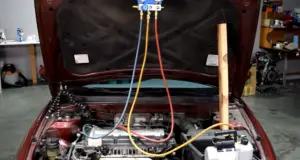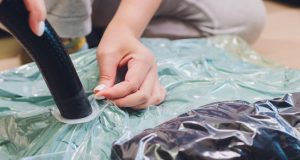How to Vacuum Seal Clothes?
Perhaps you have seen a TV ad or a friend vacuum seal their clothes, and now you feel intrigued and want to try it out yourself. Well, you can vacuum seal your clothes at home provided you have a vacuum bag and the vacuum to suck the air out of them. Vacuum sealing your clothes comes with a whole load of advantages. For example, when you vacuum seals your clothes, it makes them compact, which saves space. Also, vacuum sealing your clothes keeps the clothes away from dust and molds, damaging the clothes. Generally, vacuum sealing your clothes is excellent. So, how do you vacuum seal your clothes? Find out below and more info on vacuuming clothes.
How do you Vacuum Seal Clothes?
As we said earlier, vacuum-sealing clothes come with so many more advantages than you think. And the best part is that all you need is a vacuum bag and a vacuum cleaner with a hose, and you are good to go. So follow the steps below to vacuum seal your clothes.
Step 1: Fold the Clothes.
When you want to vacuum seal your clothes, it is advisable to fold them rather than squeezing them in the bag. The importance of the fold is to ensure the clothes are nice and neat when you want to use them. Moreover, when you fold the clothes, it also contributes to the space-saving advantage of vacuum-sealing clothes in the first place.
Step 2: Seal Completely.
When you fold the clothes, insert them into the vacuum bag. Note that there are different vacuum bags; getting the right one for you is pretty important. There is a vacuum bag with a sealing clip that provides you with an effortless sealing experience. There is also a vacuum bag with a screw top valve built into the bag in which you insert the vacuum cleaner hose to suck out the air.
Step 3: Vacuum it
Next, open the valve cap of the vacuum bag and insert the vacuum hose. Ensure you place the hose in the center of the valve, and the circular end of the hose should fill the valve. Turn the vacuum on, and you will see the bag begin to shrink as the air is removed. When vacuuming a pillow or other clothing with air, don’t empty all the air from the bag. Instead, compress the bag to about 50% of the original size, as further compressions will damage the clothing. Once you finish vacuuming the bag and remove the hose from the valve, immediately close it with the cap to prevent air from reentering the bag.
What Clothes should you not Vacuum Seal?
As you already know, when you vacuum seal clothes, the vacuum bag compresses the clothes and fabric, which saves space. But then, vacuum sealing some clothes can ruin them, especially when you store them in vacuum bags for a long time. Avoid vacuum sealing the following type of clothes:
-
Natural Fibers
Natural fiber like fur and wool clothing should not be vacuum-sealed, especially for a long time; natural fiber clothes need air to maintain their structure. But when you put natural fiber clothing in a vacuum seal bag with the air sucked out of it, it will compress the fiber, and for this reason, the garment will lose its shape; this is why even if you must store natural fibers in a vacuum bag, it shouldn’t be for a long time, a maximum of 6 months. Also, remember that wool clothing can hold moisture in them and might damage other clothing in your vacuum bag if left for a long time.
-
Fluffy Items
Fluffy items such as sleeping bags and insulated jackets with lots of air trapped in them should never be vacuum-sealed. While you may have thought these clothes would be ideal for vacuum seal because they occupy so much space, they are not; this is because when you vacuum seal them, you suck the air out of them, and the fabric gets compressed and stays that way for a long time. And the sad part is that there is no way to fluffy them up again. Also, when you suck the air out of these insulating clothing, it takes away their capability to keep heat within.
-
Leather Clothing
Lastly, items made of leather, such as leather jackets, should not be stored in vacuum storage bags; this is because the intensive pressure exerted on the clothes through vacuum sealing can damage the precious leather garments. It will also cause the fabric to acquire wrinkles and creases, which takes away its smooth appeal.
Can Mold Grow in a Vacuum-Sealed Bag?
Vacuum sealing your clothes should keep molds out of them. The only exception when you might find mold in a vacuum-sealed bag is when you store clothes that are not well dried in the bag. The moisture will promote mold growth; this is because molds can survive in an environment with extreme conditions. Even though the amount of oxygen present in a vacuum-sealed bag is considerably low, mold can still survive even if there is little moisture. For this reason, it is advisable not to leave clothes vacuum sealed for a long time, especially if you live in an area with a lot of moisture in the air.
Bottom Line
To sum things up, if you are trying to save space in your home, then vacuum sealing your clothes is an option you should consider. If you ever decide to vacuum seal your clothes, we hope this article helps you do it right. Remember, the first step to vacuum sealing your clothes is to get a durable vacuum sealing bag and ensure you suck the right amount of air from the bag. Also, remember not to leave your clothes in the vacuum bag for too long; this can ruin the cloth’s fibers. Finally, take note of the type of clothes you can vacuum and those you should not vacuum not to damage the cloth.
https://youtu.be/MeP8FS3yC1o




